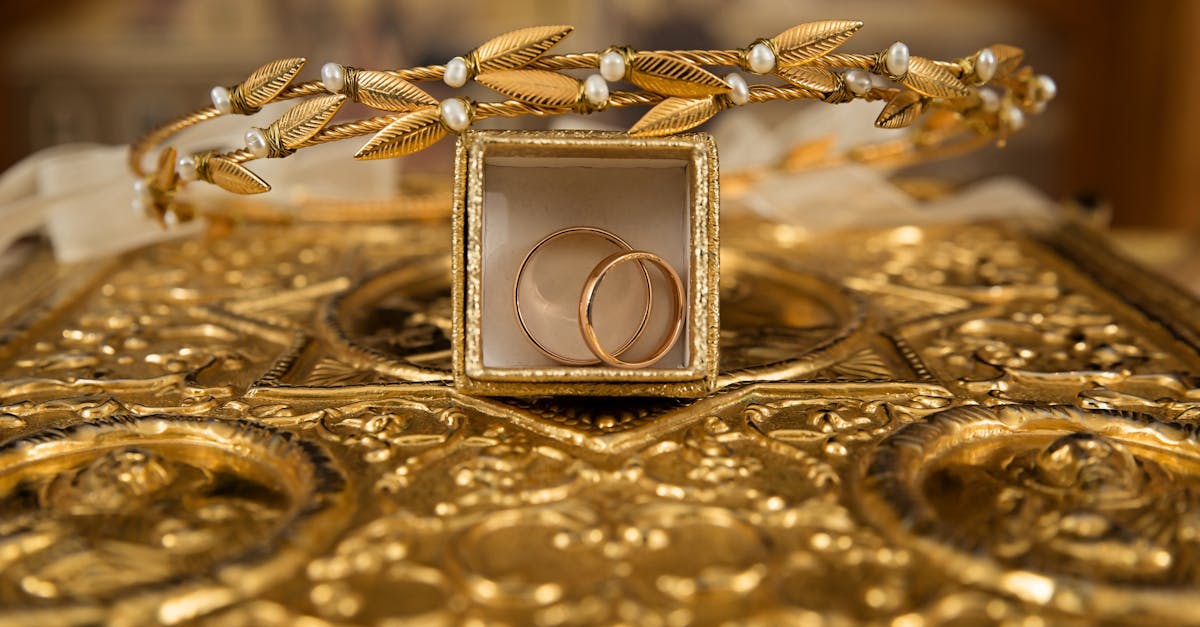Unveiling the Economic Radiance of Gold Jewelry in Asia’s Rising Stars

Gold, a precious metal that has captivated hearts and minds for centuries, continues to hold a special allure in emerging Asian markets. From intricate ornaments adorning traditional attire to modern designs gracing cosmopolitan streets, gold jewelry has become a symbol of cultural identity, economic prosperity, and personal style. As disposable income rises and consumer preferences evolve, the demand for gold jewelry in these burgeoning markets is soaring, creating a ripple effect of economic impacts that span job creation, foreign exchange earnings, and investment opportunities.
Key Insights
Key Insights
- Gold jewelry holds deep cultural and emotional significance in emerging Asian markets, contributing to its enduring popularity.
- Rising disposable income is fueling increased demand for gold jewelry as a symbol of status and success.
- Gold jewelry is not only an adornment but also a store of value and a hedge against inflation, making it an attractive investment option.
- Sustainable and responsible sourcing practices are essential to ensure the ethical and environmentally conscious production of gold jewelry.
- The future of gold jewelry demand in emerging Asian markets is promising, driven by evolving consumer preferences and economic conditions.
1. The Allure of Gold: Cultural and Emotional Significance
In Asian societies, gold jewelry transcends mere adornment; it carries deep-rooted cultural and emotional significance. Steeped in tradition and mythology, gold holds a revered position, symbolizing purity, prosperity, and auspiciousness. From ancient times, gold ornaments have been an integral part of religious ceremonies, festivals, and cultural celebrations, adorning deities, brides, and esteemed guests alike.
Gold jewelry often serves as a tangible representation of family heritage, passed down through generations as cherished heirlooms. Each piece carries stories, memories, and a sense of continuity. In many cultures, gifting gold jewelry is considered an expression of love, respect, and well wishes. The emotional attachment to gold goes beyond its monetary value, creating a profound connection between the wearer and the adornment.
Moreover, gold jewelry is intricately entwined with cultural identity. In some Asian countries, the designs and motifs incorporated into gold jewelry reflect the region’s unique heritage and craftsmanship. These adornments often showcase intricate details, symbolic patterns, and traditional techniques that have been passed down for centuries, preserving cultural traditions and fostering a sense of community pride.
2. Emerging Asian Markets: A Burgeoning Demand

Emerging Asian markets are witnessing a surge in the demand for gold jewelry, fueled by rising disposable income and evolving consumer preferences. As these economies flourish, a growing middle class with increased purchasing power is eager to indulge in gold’s allure. Gold jewelry is no longer seen as an exclusive luxury but rather as an accessible adornment and a symbol of personal style and success.
Changing consumer preferences are also driving the demand for gold jewelry. Younger generations are embracing modern designs and contemporary interpretations of traditional pieces, pushing the boundaries of what is considered fashionable. The influence of social media and the proliferation of online retailers have further fueled this trend, making gold jewelry more accessible and appealing to a wider audience.
Moreover, the growing demand for gold jewelry in emerging Asian markets is supported by a strong cultural affinity for the precious metal. Gold holds a deep-rooted significance in Asian societies, symbolizing wealth, prosperity, and auspiciousness. This cultural connection further enhances the appeal of gold jewelry, making it a desirable purchase for personal adornment, gifting, and investment.
3. Economic Implications of Gold Jewelry Demand
The surging demand for gold jewelry in emerging Asian markets has a ripple effect of positive economic impacts, contributing to job creation, foreign exchange earnings, and investment opportunities.
The gold jewelry industry provides employment opportunities across various sectors, from mining and refining to manufacturing, distribution, and retail. As the demand for gold jewelry grows, so does the need for skilled workers in these industries. This creates jobs and supports livelihoods, contributing to economic growth and development.
Moreover, the export of gold jewelry generates foreign exchange earnings for emerging Asian markets. When these countries sell gold jewelry to other countries, they earn foreign currency that can be used to fund imports, invest in infrastructure, and support economic development. Gold jewelry exports can also help to stabilize a country’s currency and reduce its dependence on other exports.
Gold jewelry also presents an attractive investment opportunity for individuals and businesses. In times of economic uncertainty, gold is often seen as a safe haven asset, and gold jewelry can provide a hedge against inflation. Investing in gold jewelry can help to preserve wealth and protect against currency fluctuations.
4. Role of Gold in Investment Portfolios

Gold jewelry plays a significant role in investment portfolios, particularly in emerging economies. Gold is considered a store of value, meaning that it tends to retain its value over time, regardless of economic fluctuations. This makes gold jewelry an attractive investment option during periods of economic uncertainty or inflation.
Inflation is a persistent increase in the general price level of goods and services. When inflation occurs, the value of paper currency decreases, reducing the purchasing power of individuals and businesses. Gold, on the other hand, has historically held its value against inflation. Investing in gold jewelry can help to protect against the erosive effects of inflation and preserve wealth over time.
Moreover, gold jewelry is a tangible asset that can be easily bought, sold, and stored. Unlike stocks or bonds, gold jewelry does not rely on the stability of financial markets or the solvency of companies. This makes it a relatively safe and accessible investment option, especially in emerging economies where financial markets may be less developed or stable.
5. Sustainable and Responsible Sourcing
Sustainable and responsible sourcing practices are of paramount importance in the gold jewelry industry to ensure ethical and environmentally conscious production. This involves considering the environmental and social impact of gold mining and refining, as well as the working conditions of those involved in the supply chain.
Ethical sourcing practices aim to minimize the negative impact of gold mining on the environment and local communities. This includes using environmentally friendly mining techniques, reducing water and energy consumption, and ensuring that mining operations do not displace or harm local populations. Additionally, ethical sourcing ensures that workers in the gold supply chain are treated fairly, with safe working conditions, fair wages, and access to healthcare and education.
Responsible sourcing also involves traceability and transparency throughout the supply chain. This means knowing the origin of the gold, the mining and refining processes involved, and the working conditions of those involved. By ensuring transparency and traceability, consumers can make informed choices about the gold jewelry they purchase and support businesses that prioritize ethical and sustainable practices.
6. Hallmarking and Quality Standards
Hallmarking and quality standards play a crucial role in the gold jewelry industry, ensuring consumer protection and maintaining market confidence. Hallmarking is a process of certifying the purity and quality of gold jewelry. It involves testing the gold content and marking the jewelry with a hallmark that indicates its purity, usually expressed in karats (K) or as a percentage.
Quality standards establish the minimum requirements for the composition, durability, and finish of gold jewelry. These standards help to ensure that消费者get what they pay for and that the jewelry meets certain expectations of quality. They also help to prevent fraud and protect consumers from being sold gold-plated or gold-filled jewelry as solid gold.
Hallmarking and quality standards are essential for maintaining consumer trust in the gold jewelry industry. They provide assurance to消费者that the jewelry they are buying is genuine and meets the заявленные standards of purity and quality. This helps to build confidence in the industry and encourages consumers to purchase gold jewelry with the assurance that they are getting a fair deal.
7. Future Trends and Outlook
The future of gold jewelry demand in emerging Asian markets looks promising, driven by continued economic growth, rising disposable income, and evolving consumer preferences. As these economies develop, a growing middle class is expected to drive increased demand for gold jewelry as a symbol of wealth, status, and cultural identity.
Changing consumer behavior is also shaping the future of gold jewelry demand. Younger consumers are embracing modern and contemporary designs, pushing the boundaries of traditional gold jewelry. This trend is expected to continue, leading to increased demand for unique and stylish gold jewelry pieces.
Economic conditions will also play a role in the outlook for gold jewelry demand. In times of economic uncertainty, gold is often seen as a safe haven asset, which could boost demand for gold jewelry as a store of value. Additionally, rising inflation could make gold jewelry more attractive as a hedge against inflation, further supporting demand.
Why is gold jewelry so popular in emerging Asian markets?
Gold jewelry holds deep cultural and emotional significance in Asian societies, symbolizing wealth, prosperity, and auspiciousness. It is often seen as a store of value and a hedge against inflation, making it a desirable investment option.
How is the rising disposable income impacting gold jewelry demand in emerging Asian markets?
Rising disposable income is allowing more consumers in emerging Asian markets to purchase gold jewelry, which is seen as a symbol of status and success. This trend is expected to continue as these economies grow and develop.
What are the key trends shaping the future of gold jewelry demand in emerging Asian markets?
Changing consumer preferences, including a growing demand for modern and contemporary designs, are shaping the future of gold jewelry demand. Additionally, economic conditions, such as inflation and economic uncertainty, could also impact demand for gold jewelry as a safe haven asset.
Key Insights
Key Insights
| Insight | Description | |—|—| | Cultural and Emotional Significance | Gold jewelry holds deep cultural and emotional significance in emerging Asian markets, symbolizing wealth, prosperity, and auspiciousness. | | Rising Disposable Income | Rising disposable income is fueling increased demand for gold jewelry as a symbol of status and success. | | Store of Value and Hedge Against Inflation | Gold jewelry is not only an adornment but also a store of value and a hedge against inflation, making it an attractive investment option. | | Sustainable and Responsible Sourcing | Sustainable and responsible sourcing practices are essential to ensure the ethical and environmentally conscious production of gold jewelry. | | Future Outlook | The future of gold jewelry demand in emerging Asian markets is promising, driven by evolving consumer preferences and economic conditions. |